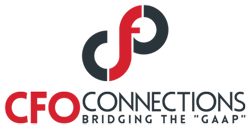A day after Congress passed the $900 billion COVID relief bill, President Trump said that he wants Congress to increase the individual stimulus from $600 to $2,000, or he won’t sign the bill. Let’s take a look at the bill as it stands right now.
Paycheck Protection Program Round 2 (PPP2)
The $900 billion deal includes $284 billion for PPP2, which will reopen after closing in August. Much like the program’s first iteration, the aid will be in the form of forgivable loans to small firms, but there will be some key changes.
Who can apply?
Businesses, some nonprofit organizations, self-employed workers and independent contractors are among those eligible.
Existing PPP borrowers may apply for a second loan, provided they have 300 or fewer employees and can demonstrate they experienced a 25% reduction in gross receipts during a quarter in 2020 compared with the same quarter in 2019.
First-time PPP borrowers will be subject to the program’s original eligibility rules. The original PPP was generally open to businesses with up to 500 employees, and there was no requirement to demonstrate a revenue loss.
How much is a business eligible for?
The maximum for PPP2 loans is $2 million. Loan amounts will be based on an applicant’s payroll, consistent with the program’s first iteration.
Second-time PPP borrowers will generally be eligible to borrow an amount equal to 2½ times their average monthly payroll costs. A notable exception: Applicants in the accommodation and food services industries, as designated by the Small Business Administration, are eligible for loans that amount to 3½ times their average monthly payroll.
What are the forgiveness requirements?
Borrowers are still required to spend at least 60% of the funds on payroll to receive full forgiveness. The other 40% may be used on eligible costs, include certain mortgage expenses, rent and utility payments. The bill expands forgivable expenses to include expenditures for personal protective equipment and other gear to protect workers; supplier costs; operations expenditures, such as software; and property damage costs due to public disturbances during 2020.
The legislation also clarifies that businesses that received PPP loans may take tax deductions for the expenses covered by forgiven loans.
The bill provides a simplified forgiveness process for PPP loans under $150,000. These borrowers will need to complete a one-page certification attesting they complied with program requirements, along with providing other information. Previously, the SBA and the Treasury issued a two-page forgiveness form meant to simplify the process for borrowers with loans of up to $50,000.
Where do businesses apply?
PPP loans are backed by the SBA but issued by financial institutions, such as banks, credit unions, fintech companies and community lenders. Interested businesses should check to see if a lender is participating.
When will the program reopen?
The bill requires the SBA to establish regulations on small-business support no later than 10 days after the legislation is signed into law. It remains to be seen if the PPP will open as quickly as it did the first time. Congress passed the Cares Act, which created PPP, on March 27, and the program opened one week later.
An SBA representative said the agency and Treasury are committed to launching the next round of PPP as quickly as possible, “working expeditiously to identify changes to Program rules, forms, and processes as laid out in the legislative text, and to appropriately update guidance and systems for PPP lenders and borrowers.”
What about businesses that had trouble accessing the program the first time?
Smaller companies that didn’t have established relationships with banks struggled to access the program when it first opened. The new bill allocates $15 billion each to community lenders and small depository lenders to issue loans. The bill also earmarks a portion of the PPP funding for both first- and second-time borrowers with 10 or fewer employees and loans of less than $250,000 in low-income areas.
What other forms of small-business aid are available?
The legislation provides $15 billion for the SBA to make grants to hard-hit live venue operators, such as theaters and live performing arts organizations. It also provides $20 billion for advance grants for applicants to the SBA’s economic-injury disaster loan program.
Finally, the bill extends a provision that pays the principal and interest on behalf of borrowers that have certain SBA loans, such as 7(a) loans, the agency’s flagship loan offering. It also provides support for the 7(a) program by increasing the amount of the SBA’s guarantee for lenders.
Other provisions in the bill that affect businesses
Business meal deductions – extends the 100% deduction to 2021 and 2022.
Enhanced employee retention credit – extends through July 1, 2021 and increases the amount of the credit from 50% to 70% of wages paid up to $10,000 for any quarter and allowing businesses with PPP loan to claim the credit.
Charitable deductions for individuals and corporations – extends through 2021 the $300 above the line deduction for charitable contributions by individuals ($600 for married filing jointly). It also suspends the 50% limitation for individuals and increases the limitation for corporations from 10% to 25%.
Child tax credit – allows taxpayers to use the 2019 income determine the credit for 2020 tax year.
Flexible savings accounts – unused 2020 FSA balance can be rolled over to 2021 and unused 2021 balance can be rolled over to 2022.
Educator expense tax deductions – clarifies that personal protective equipment and disinfectants qualify for the $250 above the line deduction.
We are here to help you navigate through this new round of stimulus to help you get through this uncertain time. Please click here for a free consultation.
